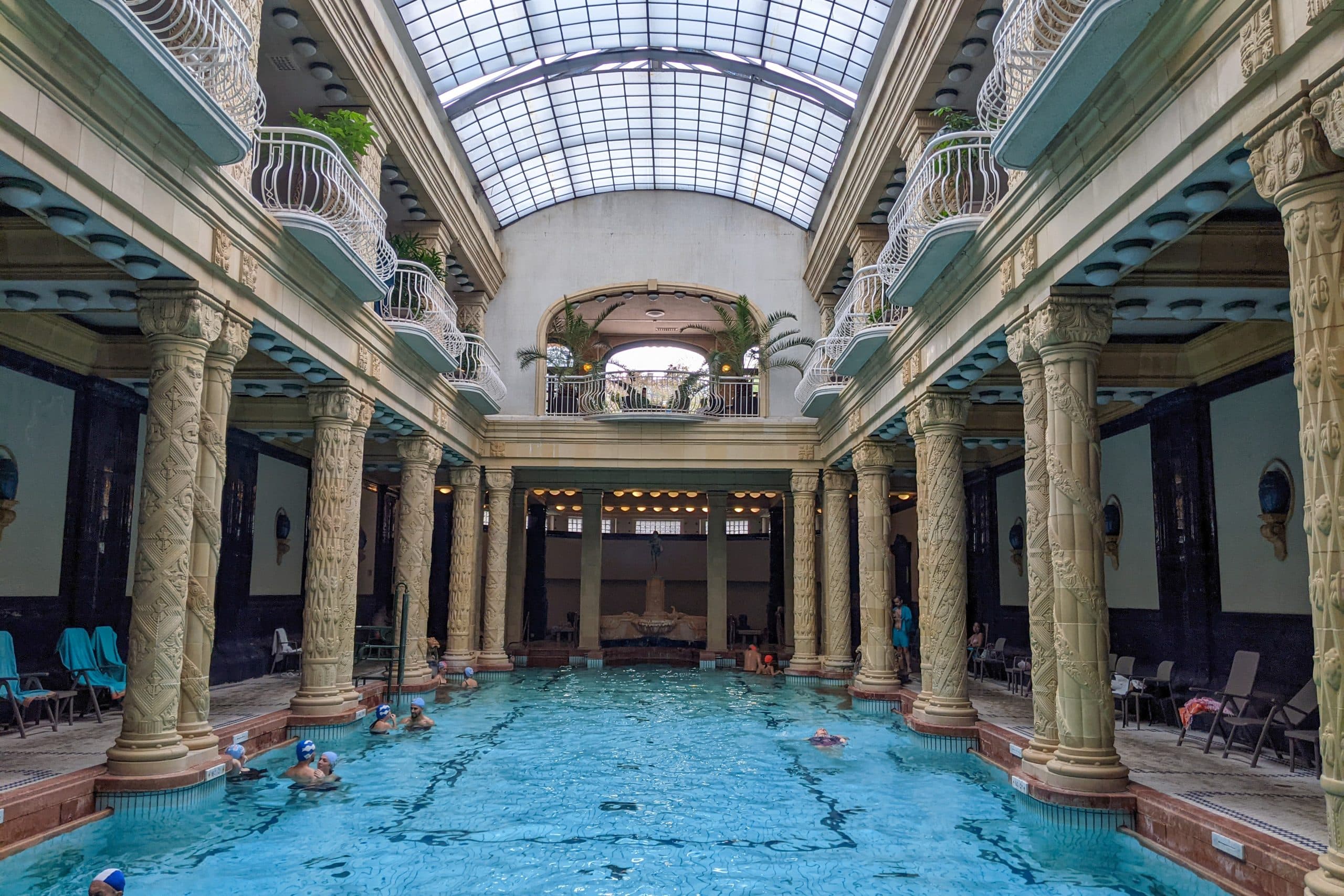Budapest is one of those destinations that gets more and more interesting with each subsequent visit. With a perfect mix of grit and beauty, it’s a city that has so much to offer for many different travellers.
History buffs, architecture junkies, bathing aficionados, outdoor enthusiasts, backpackers, honeymooners, retirees, foodies, and river cruisers alike can all find fulfilling ways to pass time in Budapest. No matter what you’re looking for, you’ll be able to find it in Hungary’s bustling capital.
On my fourth visit to the city, I spent six days immersing myself in everything that Budapest has to offer. Here are 10 tips to help you plan a visit to Budapest, including what I’ve come to appreciate most about the city over the years.
In This Post
1. Spend Time by the River
The Danube flows through Budapest, and is an iconic symbol of the city. Not only does it bisect hilly Buda and flatter Pest, but many visitors arrive to the city on one of the many river cruises that dock along its banks.
Any visit to the city will surely involve the Danube in some way, shape, or form. That might mean a casual stroll during some sightseeing, a view from above, or a journey on the river by boat.
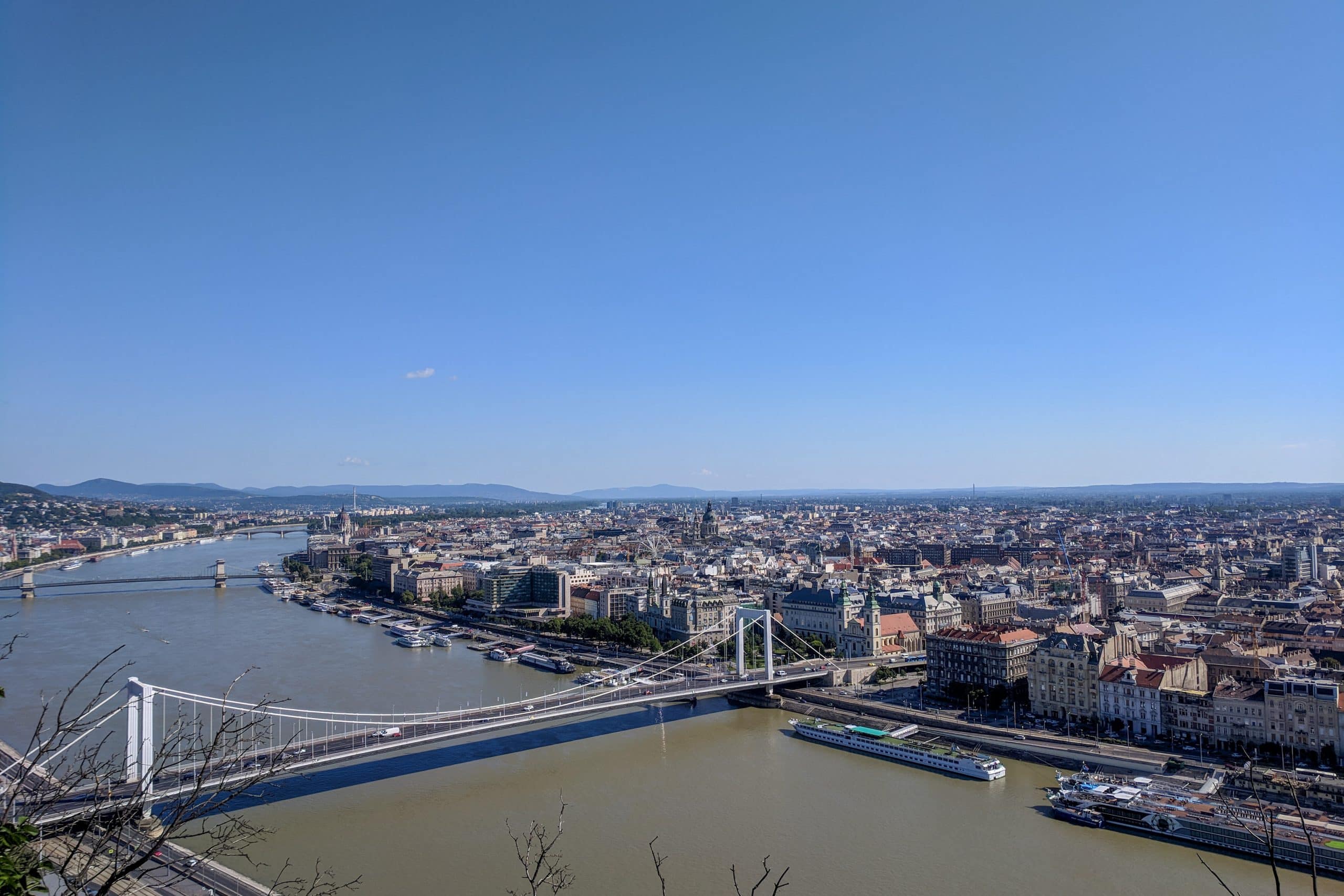
The bridges that connect the two sides of the city are just as iconic as the river itself. In the heart of Budapest, you’ll find Széchenyi Lánchíd (the Chain Bridge), Margit híd (Margaret Bridge), Szabadság híd (Liberty Bridge), and Erzsébet híd (Elizabeth Bridge).
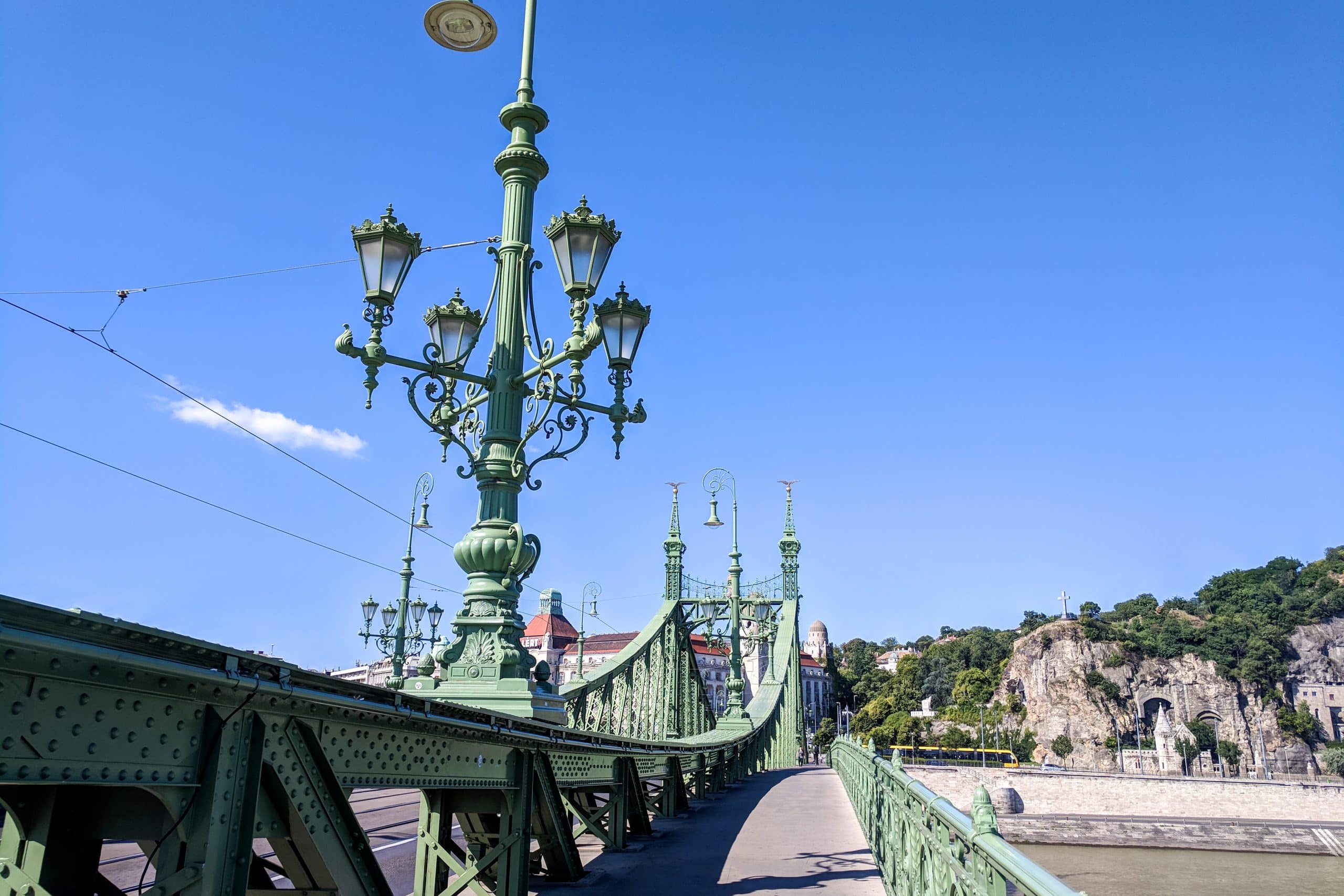
Many of the city’s sights lie close to the river. If you’re keen to explore Budapest by foot, walk across one bridge, explore, and then walk back along a different one.
For a great perspective of Budapest, head half way across the Margaret Bridge and exit onto Margaret’s Island. From the middle of the Danube, you’ll enjoy views of Buda and Pest.
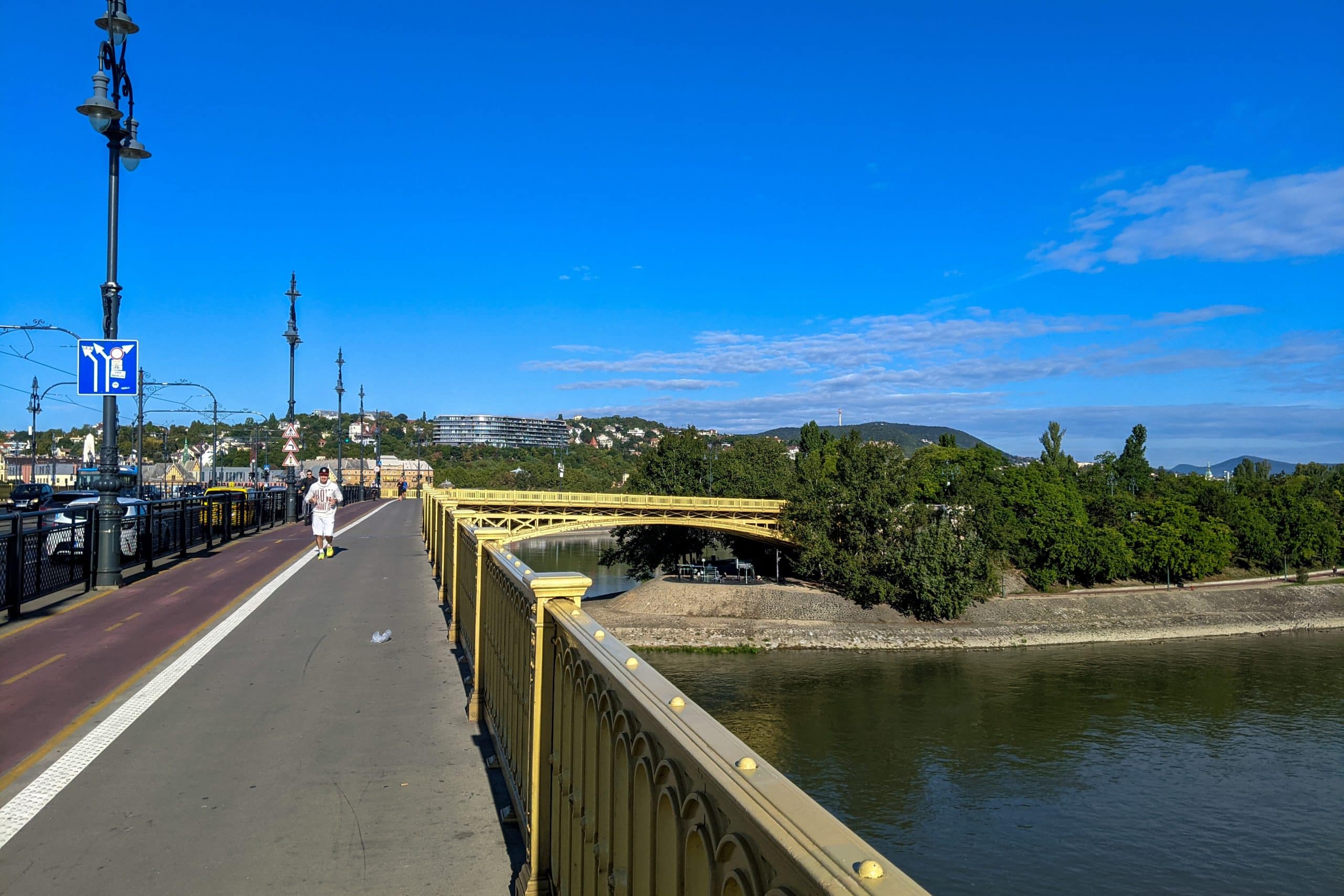
Margaret Island has a roughly 5km running track that follows its edge. If you’re looking to work up a sweat, you’ll enjoy sweeping city and river views as you burn some calories.
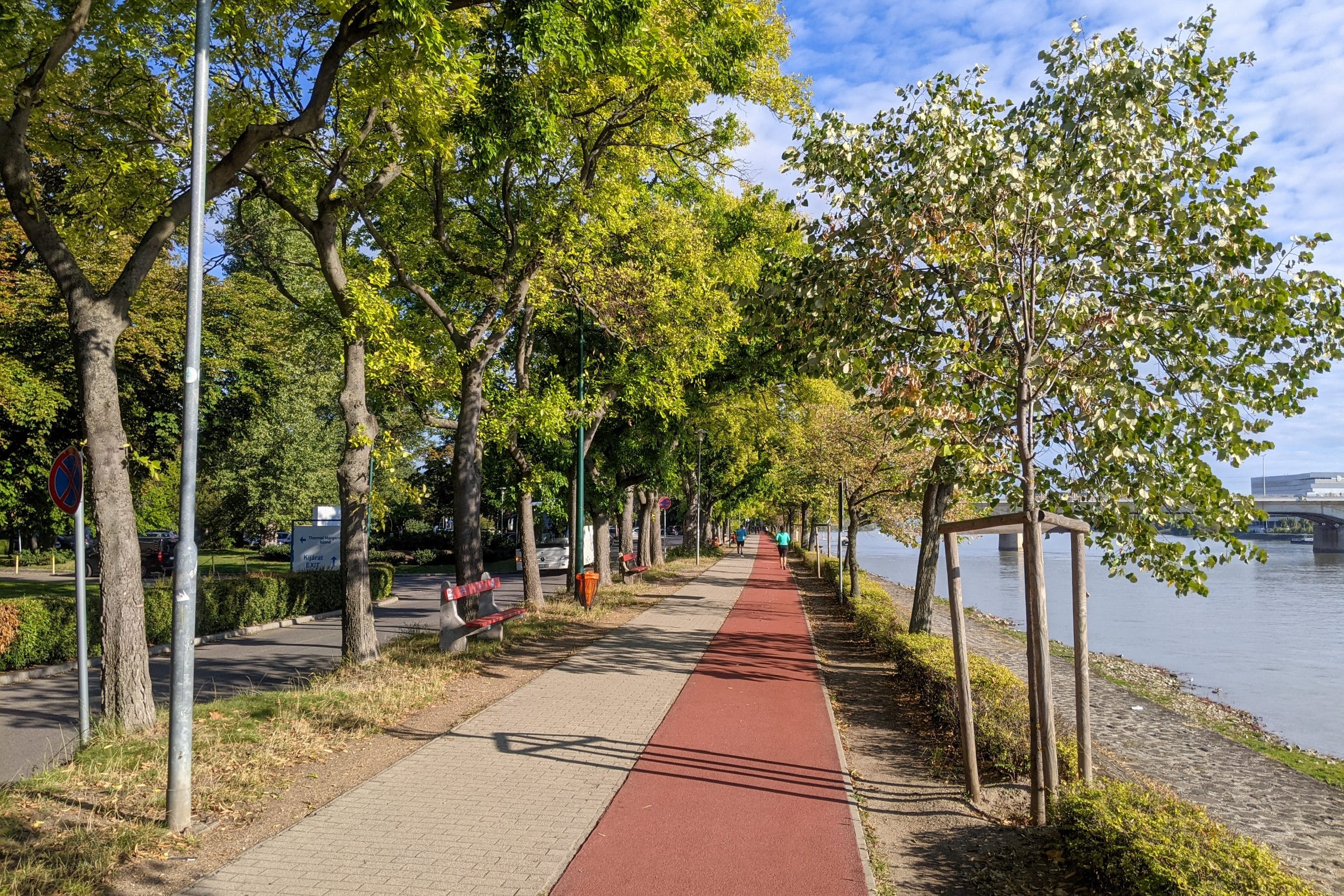
Just north of Margaret Island on the Buda side is Római Part, a stretch of eateries and beverage shops that runs along the riverfront. Spend an afternoon here enjoying hot food and cold drinks with friends on a casual stroll.
2. Run to the Buda Hills
On the western bank of the Danube is Buda, which was historically the capital city of the Kingdom of Hungary. In 1873, the two separate cities of Buda and Pest merged to become Budapest.
Buda is the hillier part of the city, and heading up to higher grounds will afford you great views of the area. If you don’t like the idea of stairs or hills, you can always take the metro and use escalators to gain altitude, or alternatively, hop on the funicular at Buda Castle.
The most iconic part of Buda is the Castle Hill area, which sits prominently up from the riverbank. In this area, you’ll find some of Budapest’s most popular tourist destinations, including Buda Castle, Fisherman’s Bastion, and Mattias Church.
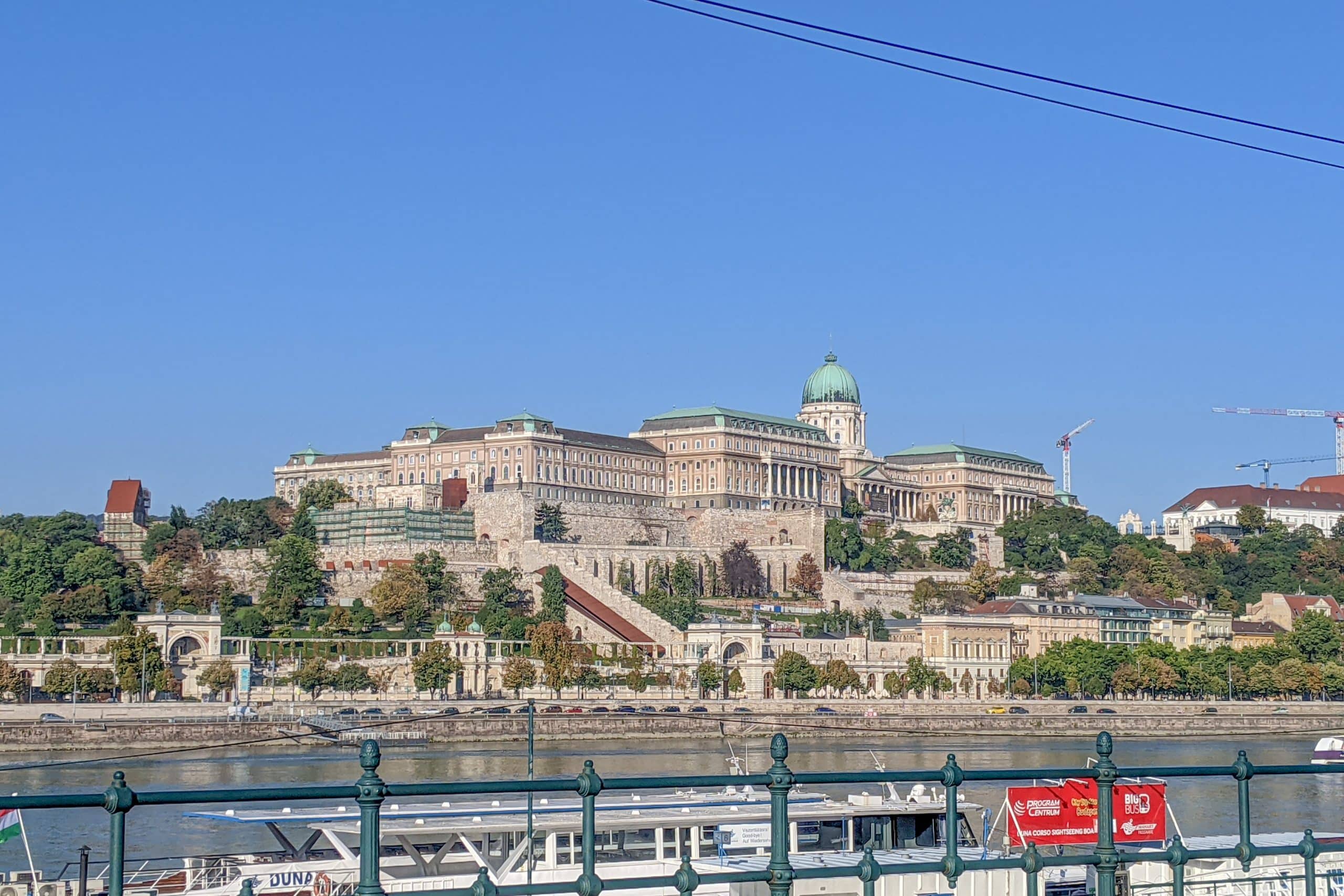
A network of caves with a storied past runs under the castle. The labyrinth has been used as a wine cellar, a torture chamber, a bunker, and, more recently, a tourist attraction.
Buda is known for being the calmer, more residential side of Budapest. Most people wind up staying in Pest and visiting Buda, as it’s easy to access, and most of its attractions are located close to the Danube.
For a taste of the city’s history during the Soviet era, venture out to Memento Park, which is about 20 minutes from the city centre by car or transit. Here, you’ll see a collection of statues that were promptly removed at the fall of communism, as well as historical exhibits.
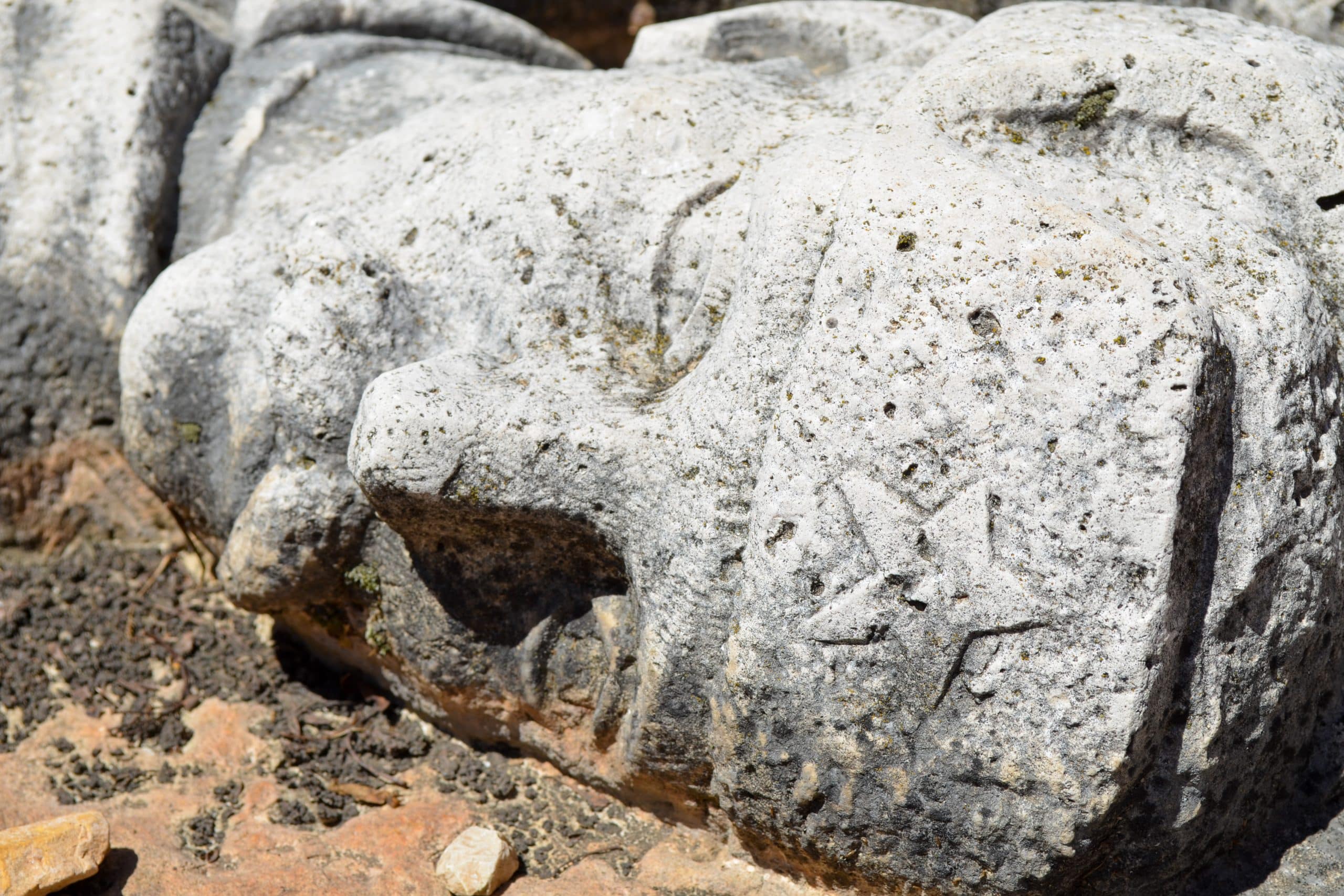
3. Get Lost in Pest
The livelier side of the city resides in Pest, on the eastern side of the Danube. The majority of tourist accommodations, restaurants, and nightlife are concentrated here.
You’ll also find many of the city’s most iconic landmarks on the Pest side, including the Hungarian Parliament, the Shoes on the Danube monument, Great Market Hall, and Deák Ferenc tér, the city’s main square.
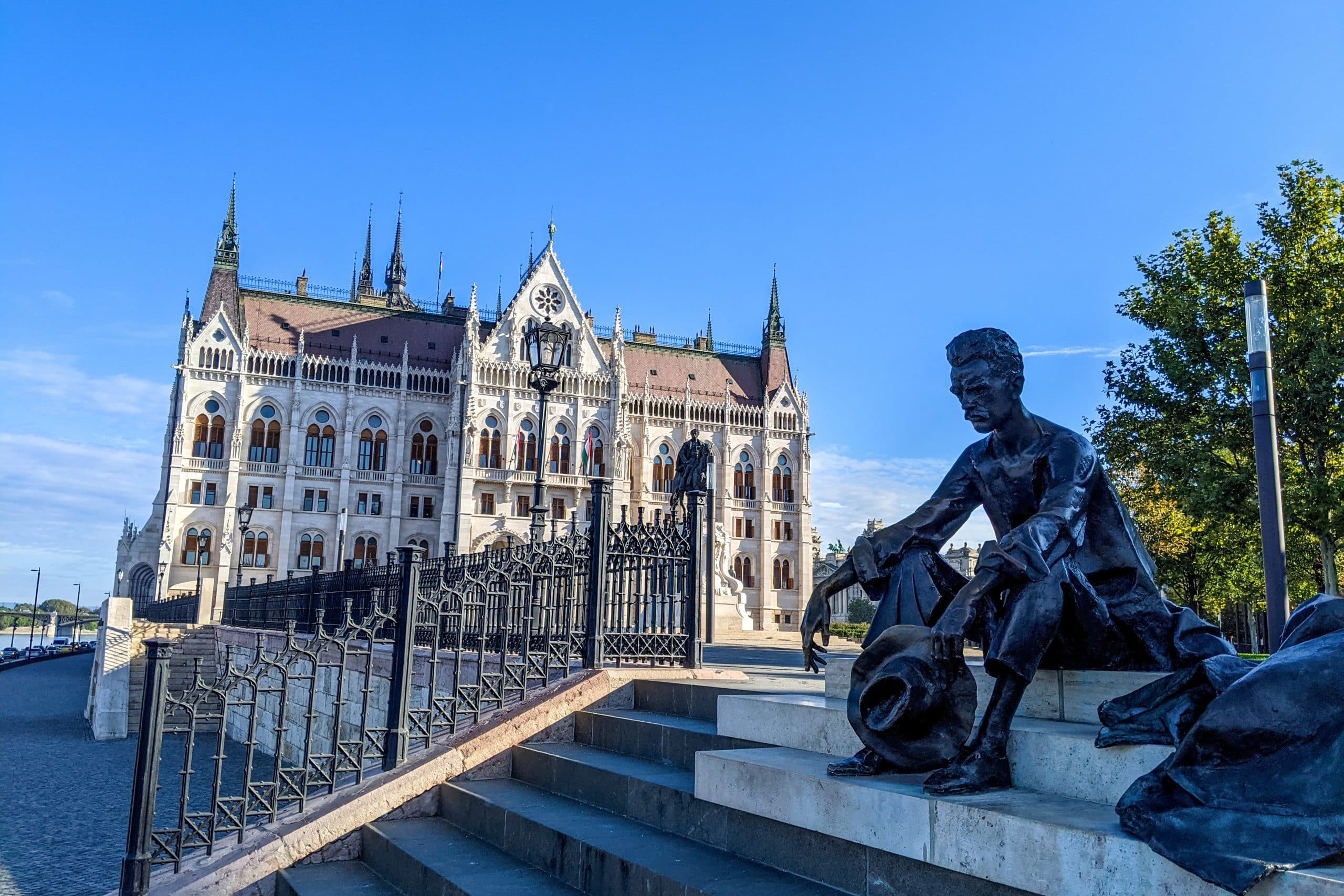
You’ll have no problem filling your time strolling around the streets of Pest. It’s a bustling area both throughout the day and well into the wee hours of the night.
Pest is also where you’ll find many of the city’s best ruin bars, rooftop terraces, and restaurants. It’s just as fun to plan out a restaurant and bar tour as it is to duck into places that look interesting as you make your way through the city.
To speed things up, consider hopping on one of the city’s iconic trams, or use the metro to get to where you need to go. Using public transportation in Budapest is affordable and easy, despite having some station names that are nearly impossible to pronounce.
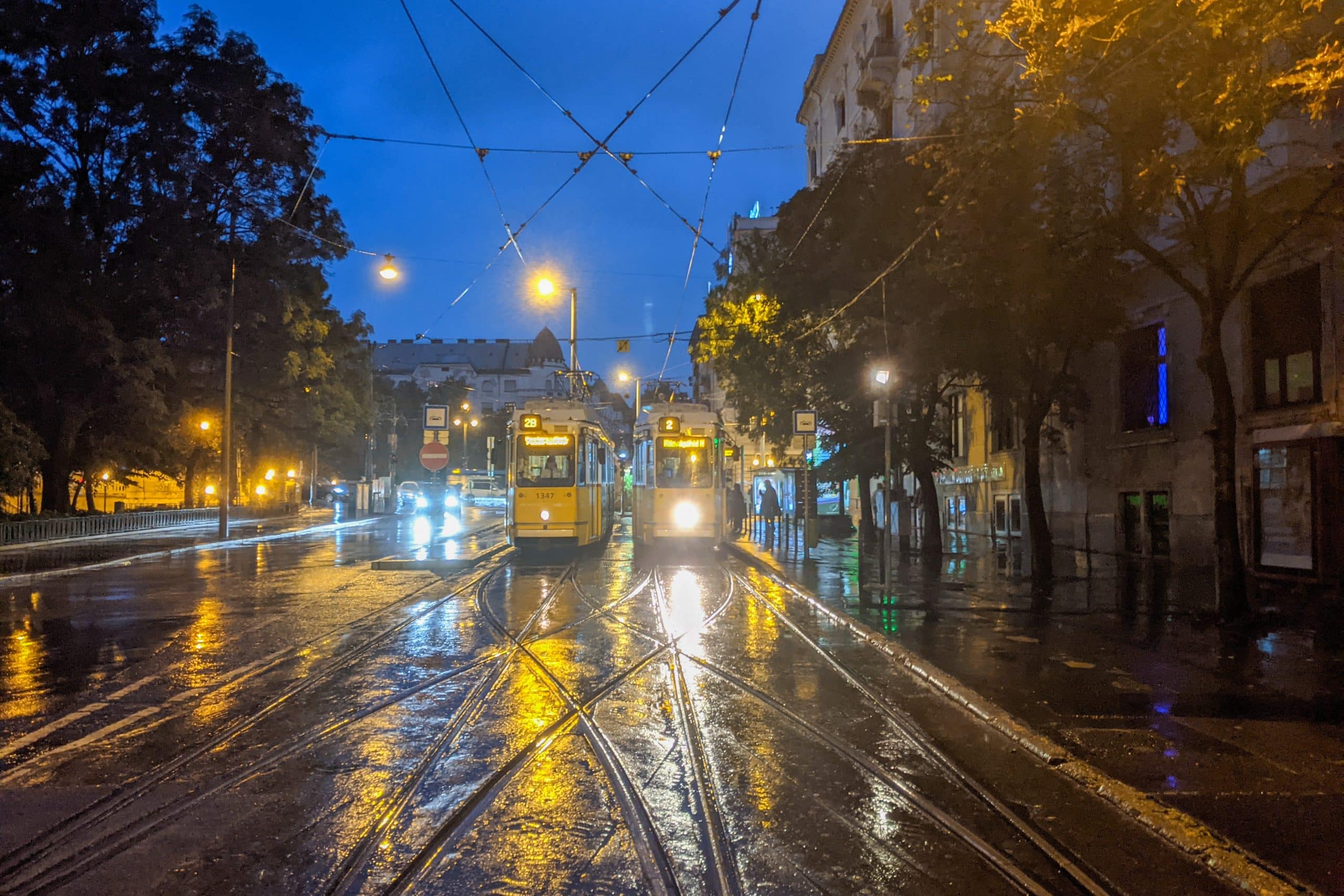
4. Soak in the Baths
Budapest is also known for its many thermal baths. The city sits on a fault line, which results in plenty of spring water shooting up towards the earth’s surface.
Officially, there are 12 thermal baths in the city, and even more throughout the rest of the country. They range from dark 16th century Ottoman domes to vast Art Deco bathing complexes, alongside newer additions with rooftop pools.
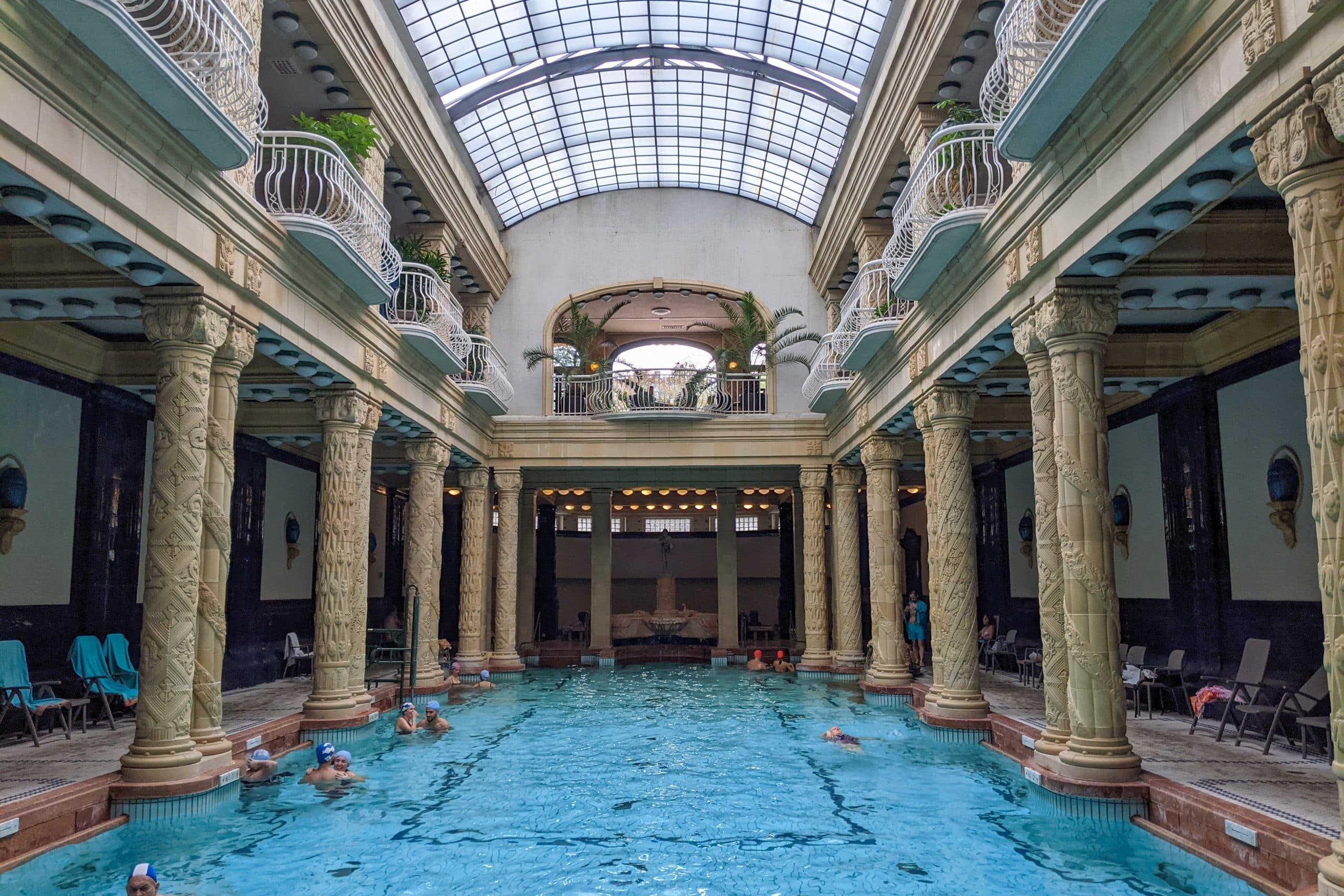
The baths are believed by many to work wonders for the mind, body, and soul. Whether you’re in need of some pampering or just want to soak up some history, be sure to include at least one thermal bath in your Budapest itinerary.
In my opinion, aim to visit one of the older baths, such as Rudas, as well as one of the newer baths, such as Gellért. You can’t really go wrong, and since the baths are spread out across both sides of the city, you’ll never be far from one.
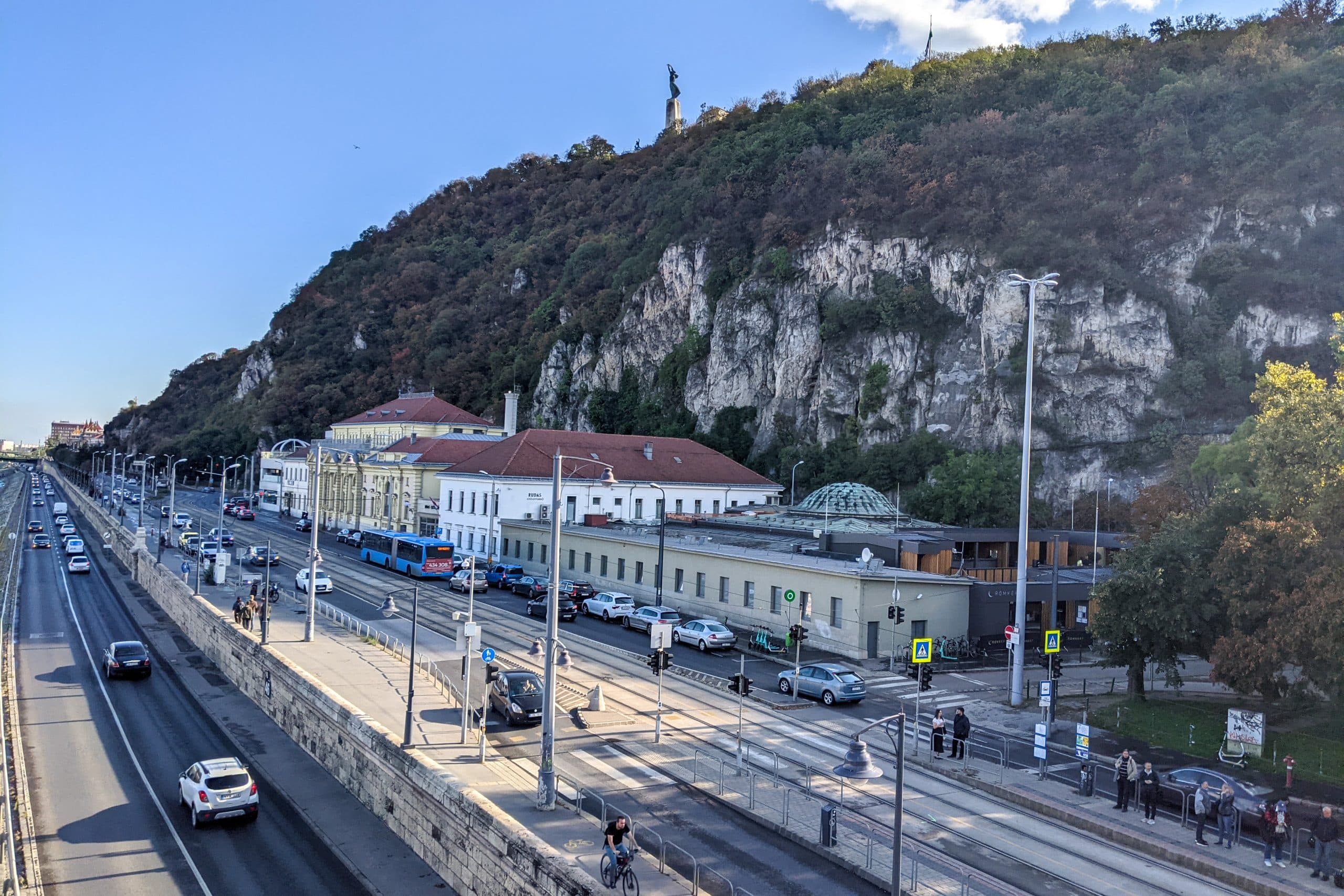
In the summer, consider bathing at night, where you can soak in the waters well after the sun has set. Many of the baths also have cafeterias and bars, so you can refuel and relax in between soaks in the warm waters.
5. Enjoy Hungarian Cuisine
One of the best parts of travelling is experiencing authentic food in its best form.
Hungarian food is soulful, spicy, and delicious. From steamy stews to cured meats to delightful street food, Budapest’s food scene showcases the best of Hungarian cuisine at affordable prices.
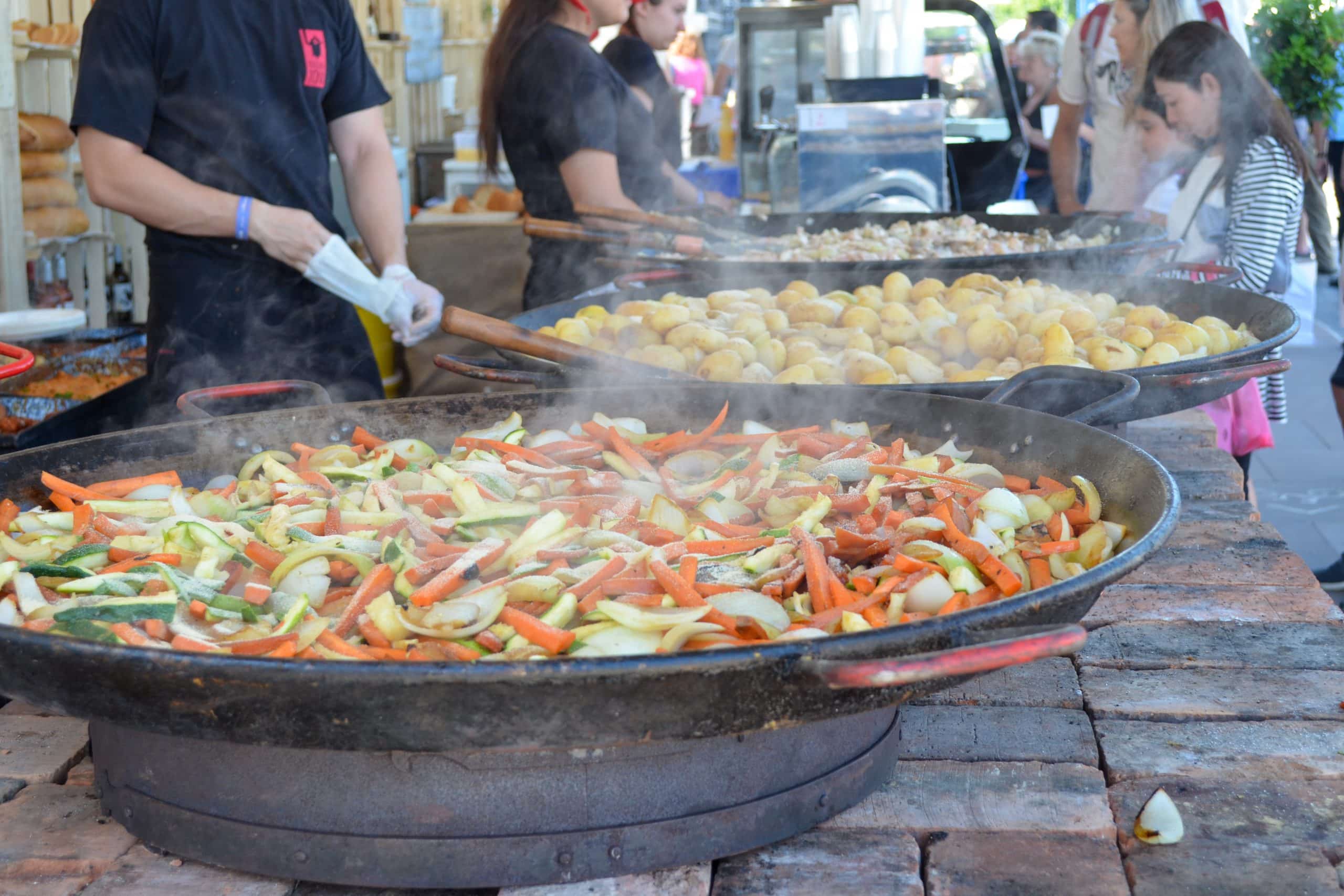
An orange or red hue adorns many of Hungary’s most iconic dishes, due to the abundance of paprika in many recipes. Head to one of the city’s markets to find the freshest packets of the spice to stock your cupboards with at home.
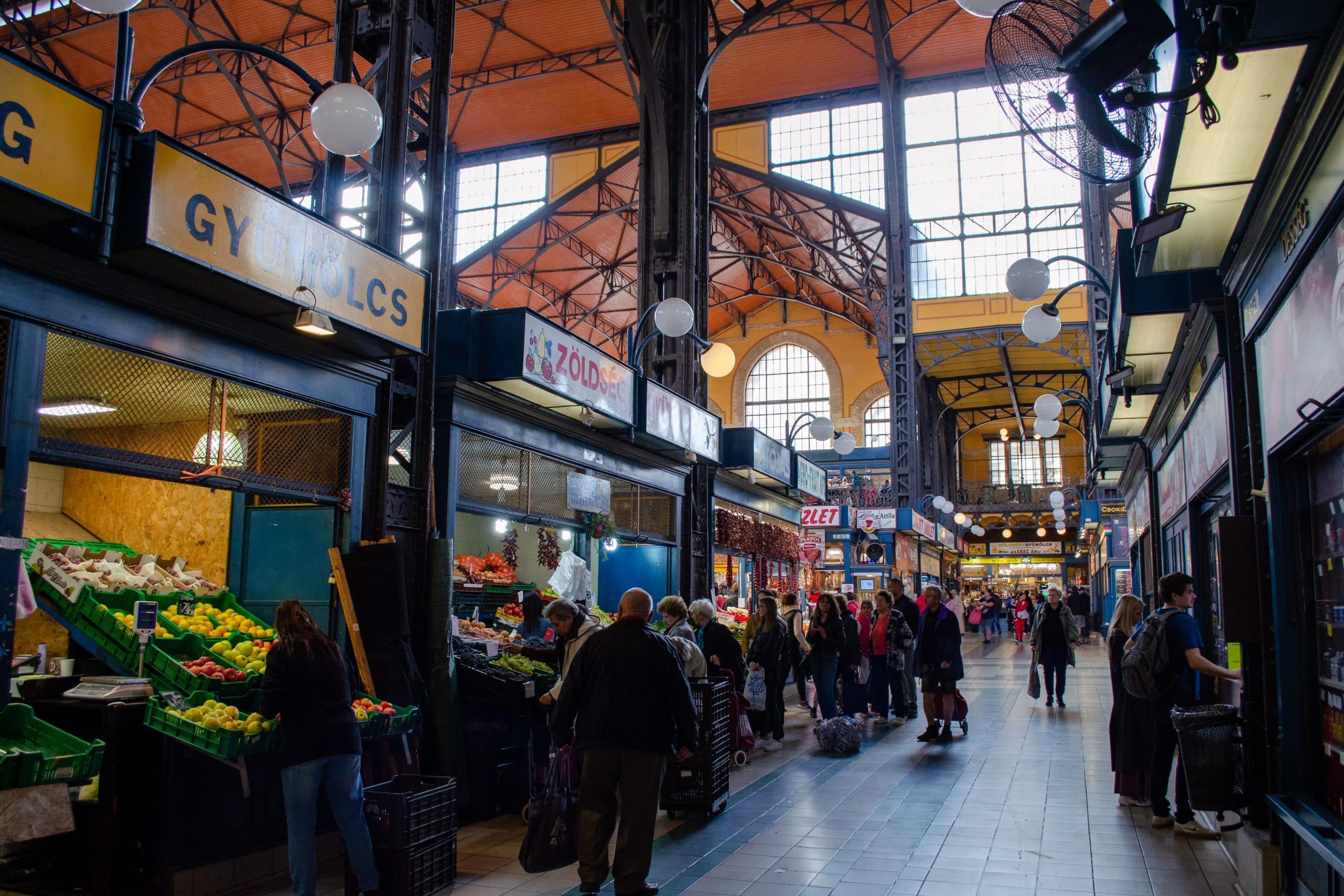
Perhaps the most renowned Hungarian dish is gulyás (goulash), a hearty combination of meat, vegetables, and spices. There are many different variations on the dish, and it’s very easy to come across during your time in Budapest.
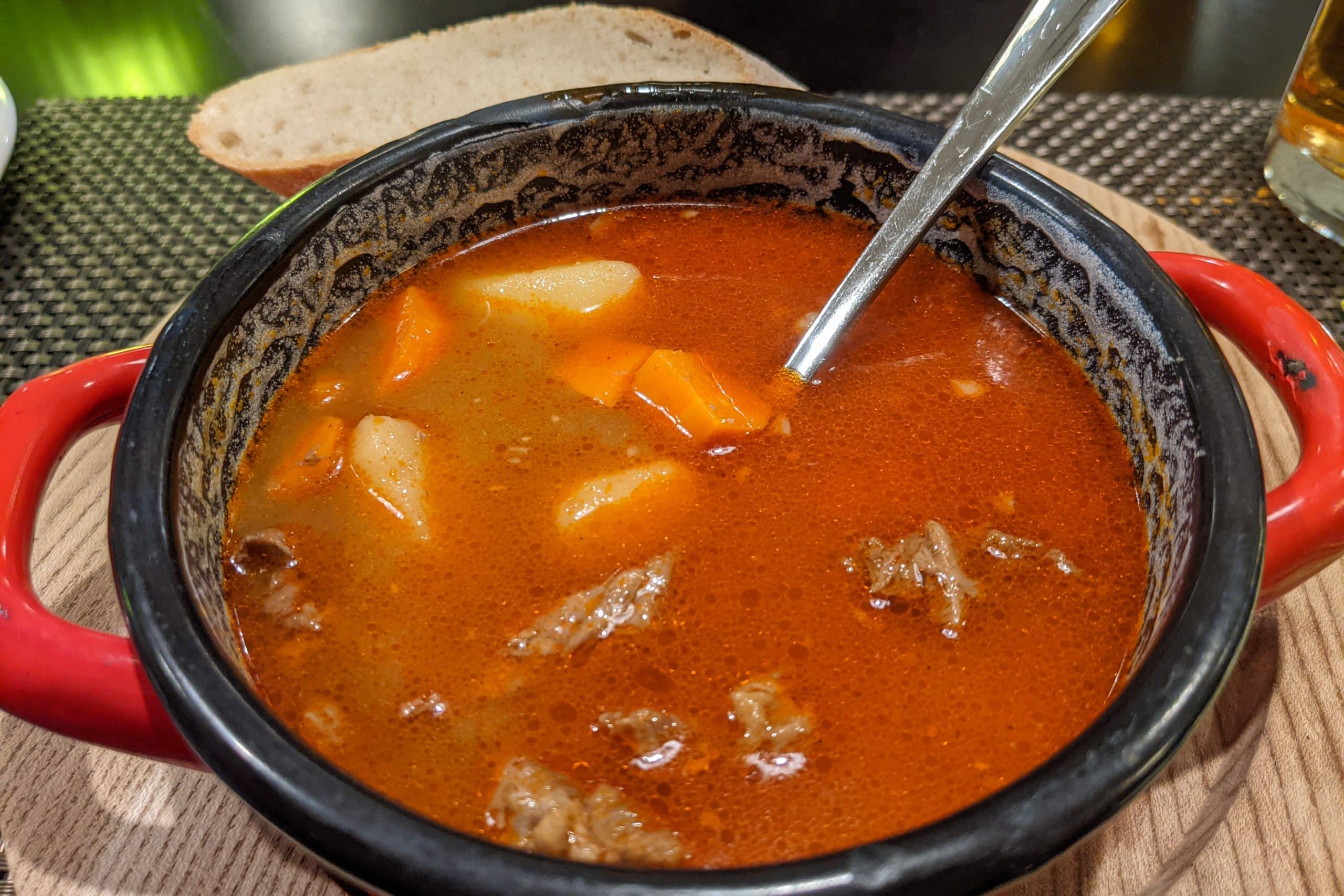
Aside from goulash, be sure to try paprikás csirke (chicken paprikash) and pörkölt (meat stew). If you have a sweet tooth, keep an eye out for kürtös kalács, a chimney-shaped confection.
As per street food, look no further than lángos, an indulgent deep-fried dish that consists of flatbread, sour cream, cheese, and a host of other toppings. If you’ve already had or are about to have a big night, a lángos will work wonders on your tastebuds.

6. Sip on Hungarian Wine
Hungary is a major wine-producing region in Europe. The country is situated between the 46th and 49th parallels, which is similar to some well-known wine-growing regions in France.
In Hungary, vineyards can be found in most parts of the country, with the exception of the eastern border with Romania. The country’s rolling hills are rich in volcanic soils and limestone, which make for great winemaking soils.

As you’re sitting down to enjoy some great Hungarian cuisine, ask your waiter for some recommendations about wine that pairs well with your dish. Also consider taking part in a guided wine tasting, which can be arranged through your hotel or on your own.
7. Get Quirky at Ruin Bars
In Budapest’s Jewish District, which is also known as District 7, there are many abandoned buildings that have been revived with the onset of ruin bars. A night out in the city is bound to include a stop at these vibrant hubs of food, drink, art, and community.
Rather than demolishing buildings, entrepreneurs in the early 21st century began to convert under-utilized complexes into bars.

You might not expect to find an eclectic mixture of antiques, mismatched furniture, neon lights, music, food, and drink when you pass by the entrance to a ruin bar. Once inside, your world transforms into a fascinating feast for all of your senses.
The original and most well-known ruin bar complex is Szimpla Kert, located in the heart of Pest. Step inside and you’ll find a dark two-storey labyrinth with bars and eateries.

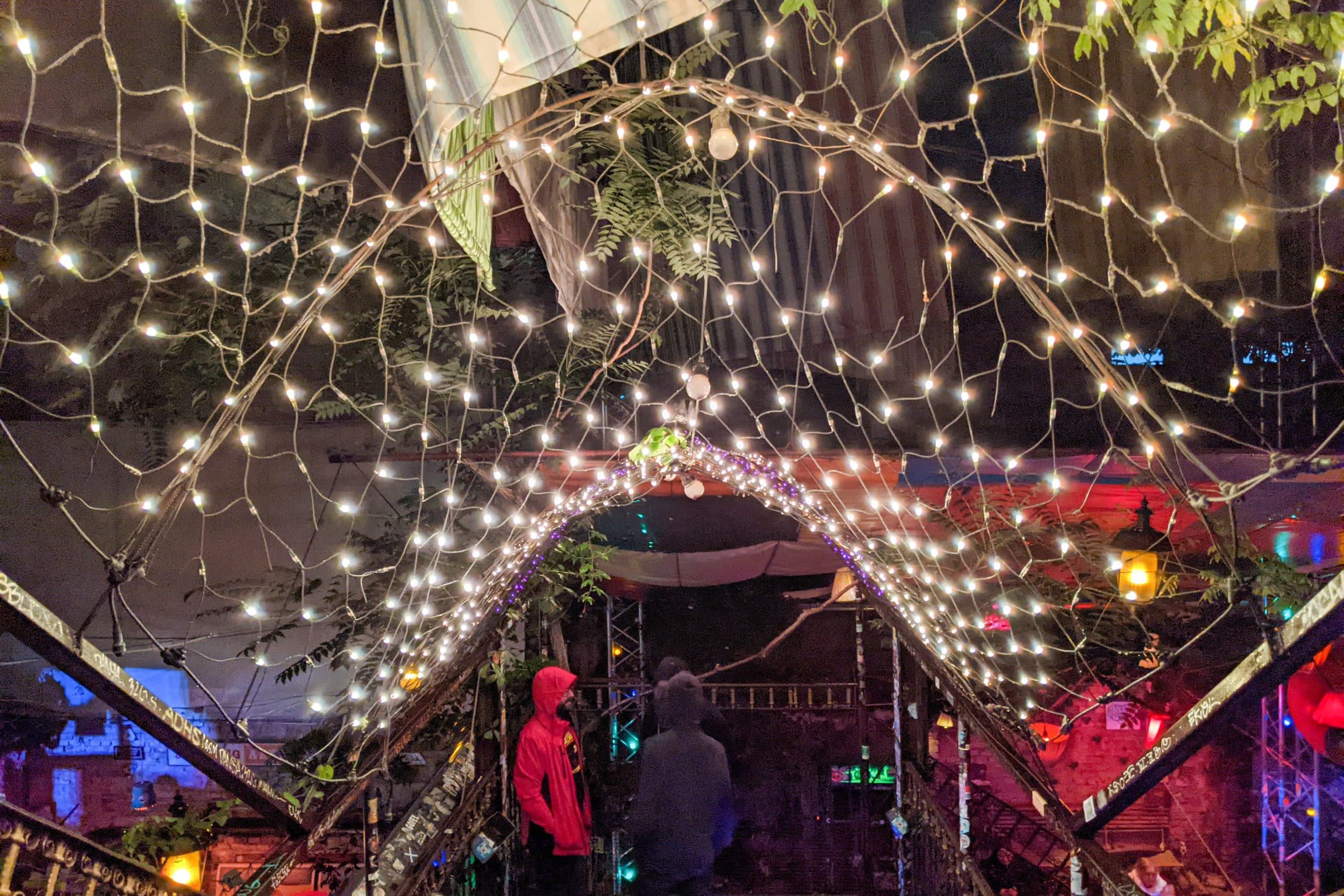
It’s very easy to spend time here at any time of the day. It’s open until 4am daily, and don’t be surprised if you lose track of time while working your way around the ruin bar.
There are many other ruin bars worth checking out, including the Instant-Fogas Complex (the largest of the ruin bars), Kőleves Kert, and Élesztő. Each is unique in its own right, so be sure to read up about which ruin bar(s) best suit your fancy.
8. Twist Your Tongue with the Language
As soon as you arrive in Budapest, you may find it difficult to figure out any of the Hungarian words. Your eyes aren’t playing tricks on you; rather, you’re just beginning to notice how unique Magyar, or Hungarian, is.
While Hungary is surrounded by Germanic, Romance, and Slavic languages, Hungarian is actually related to Finnish, Estonian, and other Finno-Ugric languages. The grammar system is completely unique from any of the neighbouring countries, and works very differently than English.
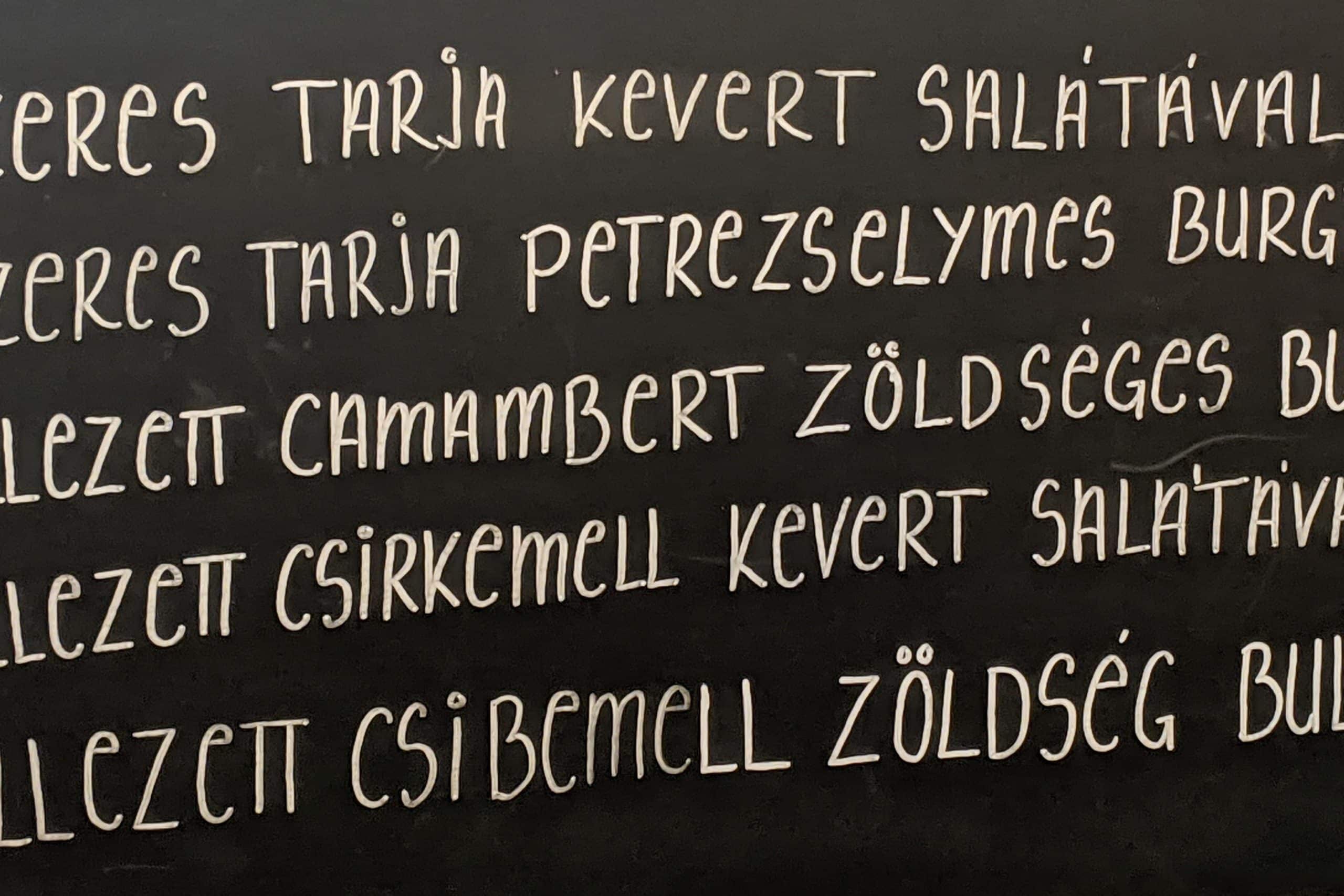
On your way into the country, try picking up a few pleasantries to use. Greet someone with jó napot, bid farewell with viszontlátásra, say thank you with köszönöm, or raise a glass and make a toast with egészségedre.
If you’re up for a challenge, take a stab at megszentségteleníthetetlenségeskedéseitekért. The phrase, which roughly translates to “Due to your (plural) repeatedly not being possible to be desecrated”, won’t get you very far, but if you can get anywhere close to saying it, you’ll have earned the respect of the locals.
9. Catch the Sunrise and Sunset
If you’re an early riser, make your way to the Buda side and gain some elevation to be rewarded with a sunrise over the flatter Pest. Get your heart pumping with a hike or jog up Gellért Hill, or find a nice vantage point around the Buda Castle complex.
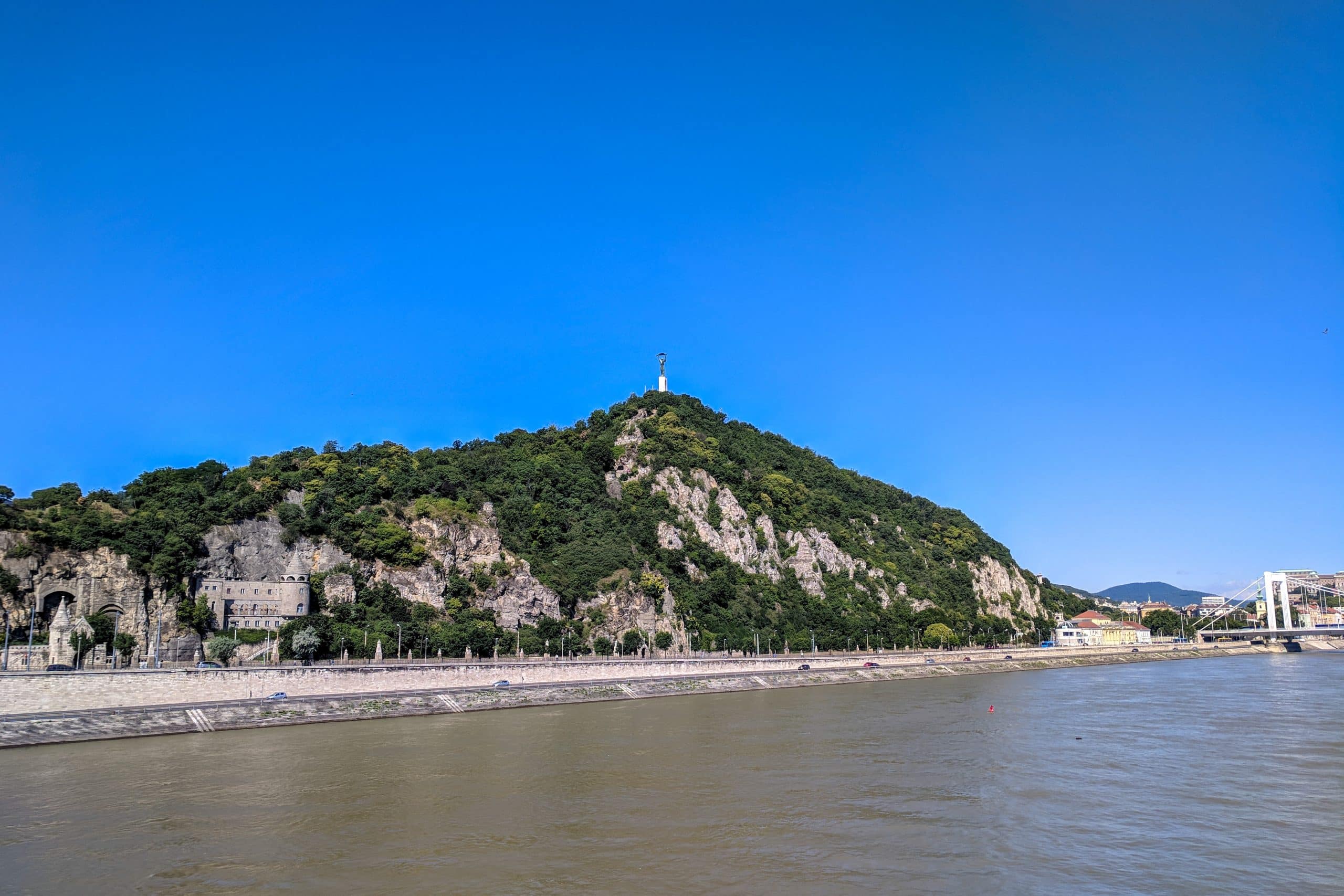
If you’re in Budapest on a clear night, you’ll definitely want to catch the sunset. Head to the Pest side of the city to watch the sun fall over the hills in Buda.
If it’s nice out, head out for an evening stroll along the river and find a nice place to sit. Along the Danube, there are plenty of steps that lead down to the water, and you’ll likely find locals enjoying the views, too.
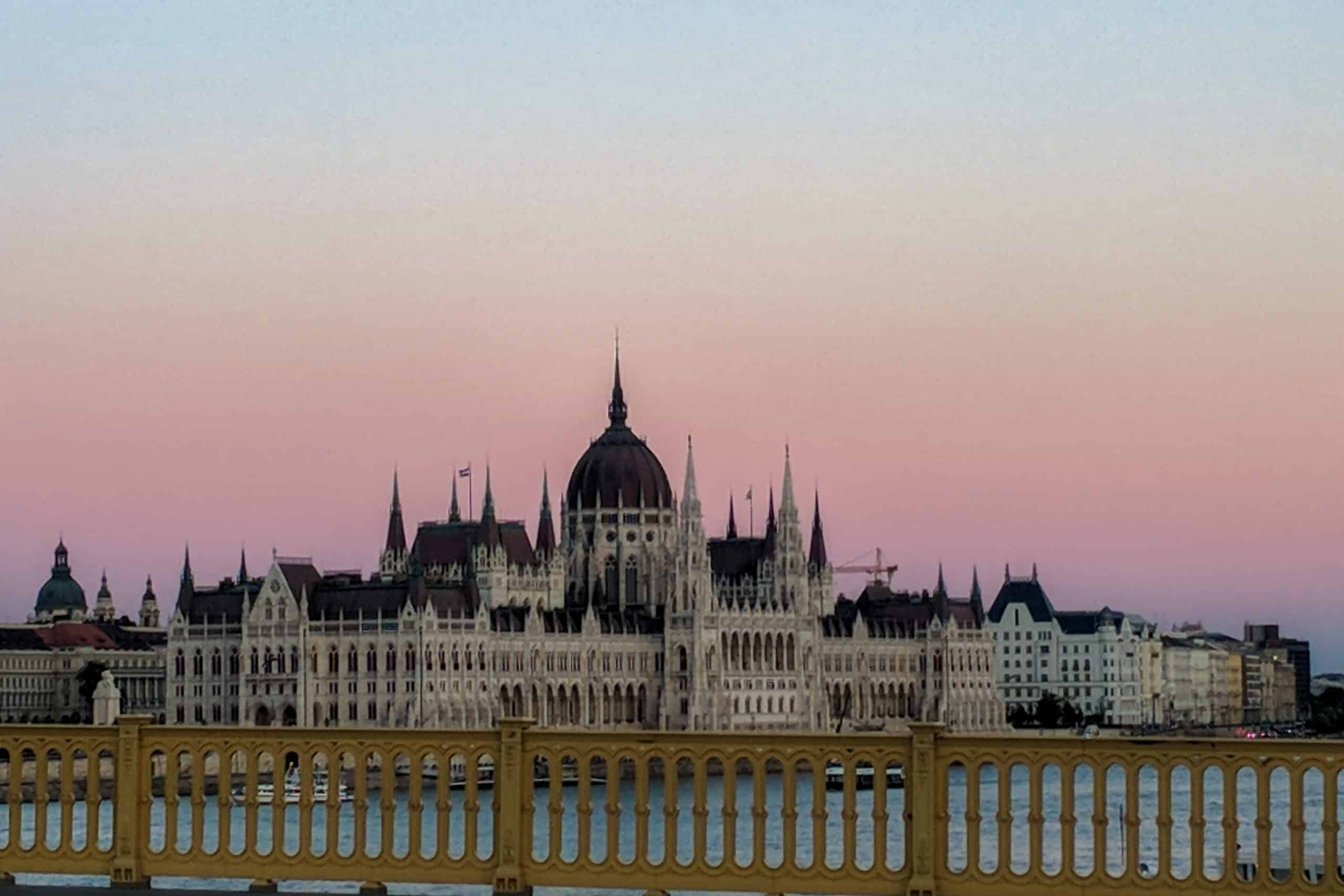
Any hotels along the riverbank will have great views, but if you don’t happen to be staying in a place with a great perspective, just head to a rooftop bar. There are a number of patios overlooking the Danube, and you shouldn’t have any difficulty finding one that suits your budget.
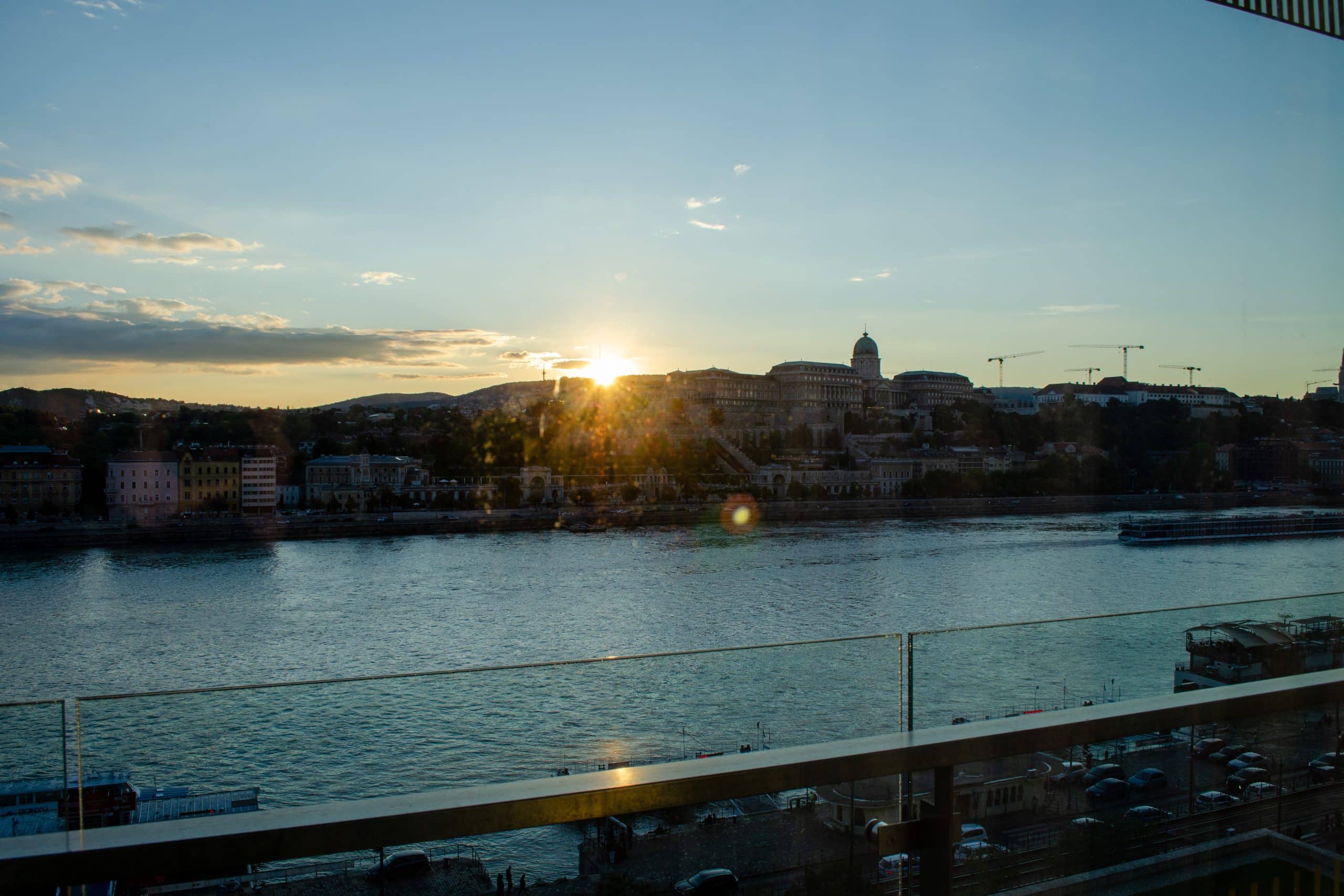
If you’re staying at the Matild Palace, or if you’re up for a bit of a splurge, check out The Duchess for outstanding views and great cocktails.
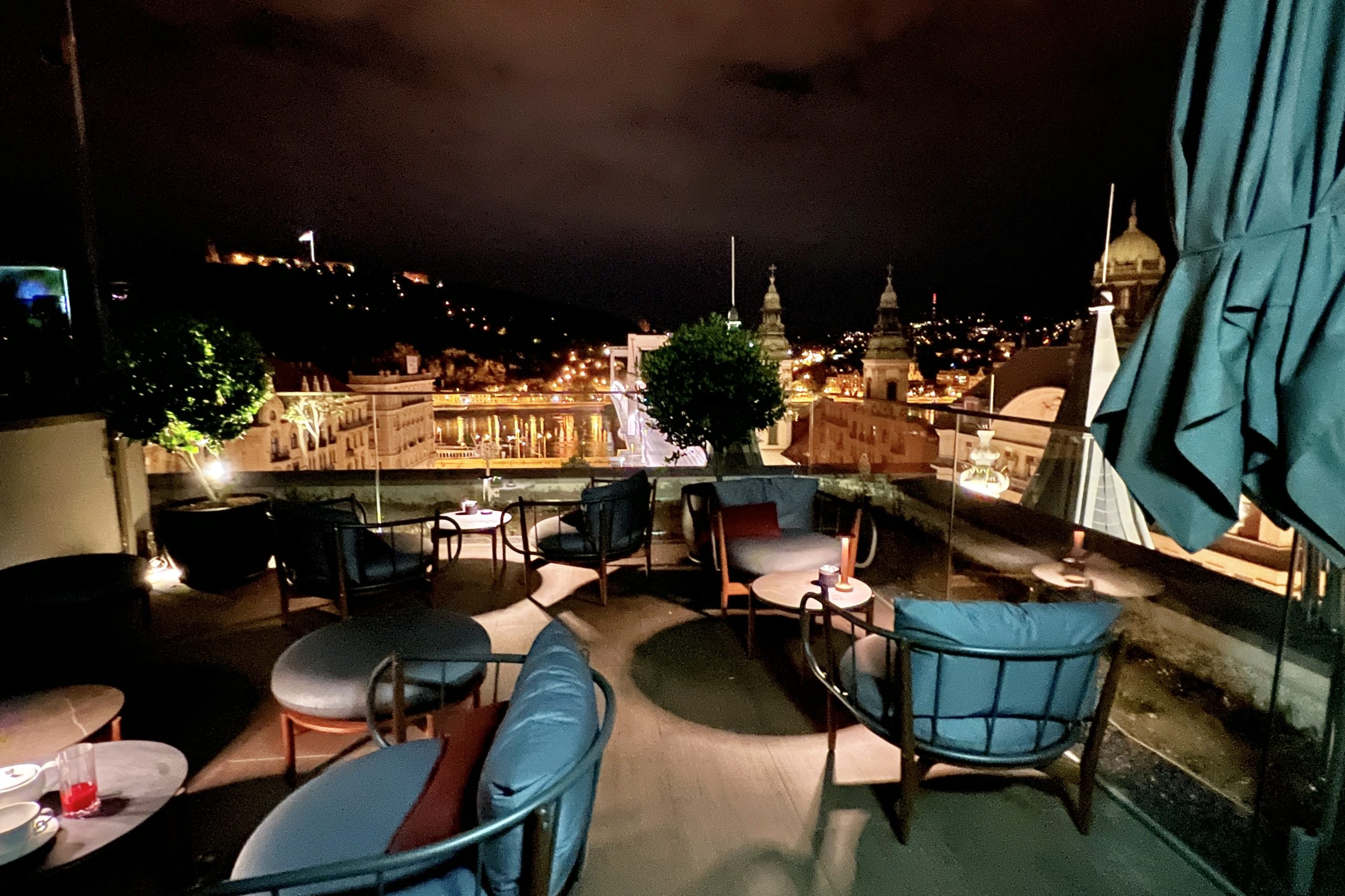
10. Cruise Up and Down the Danube
Cruising on the Danube is a perfect way to take in much of what Budapest has to offer. You don’t have to be on a multi-day river cruise, though, as there are a number of shorter journeys throughout the day.
Best of all, you’ll have a perfect vantage point of both sides of the city. Depending on the tour operator, you can either be treated to some facts and figures about the various landmarks, or you can sit back, relax, and just soak in Budapest’s wonderful sights.
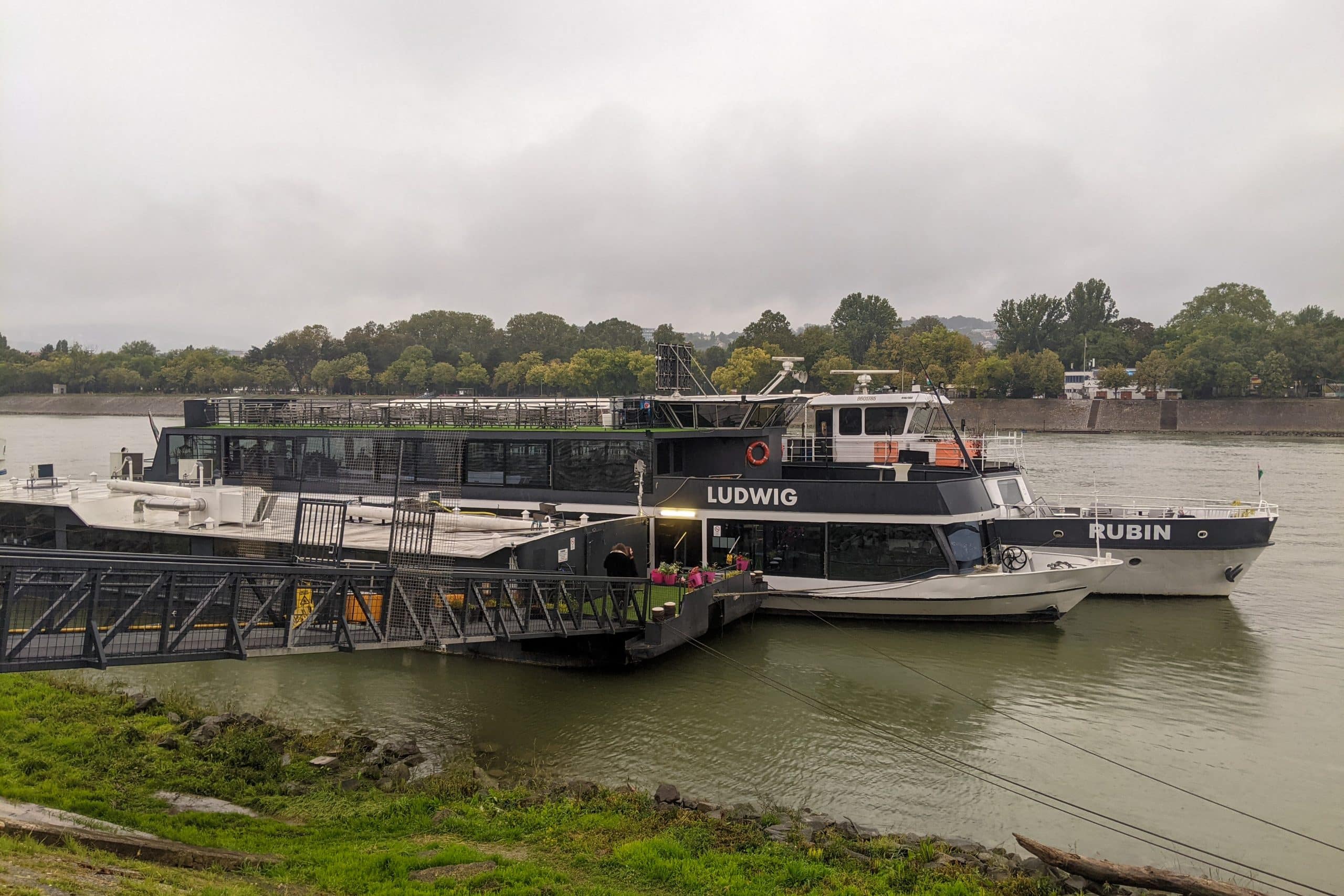
A sunset or nighttime cruise is likely the best bet, as the city is either bathed in pink hues or illuminated with bright lights.
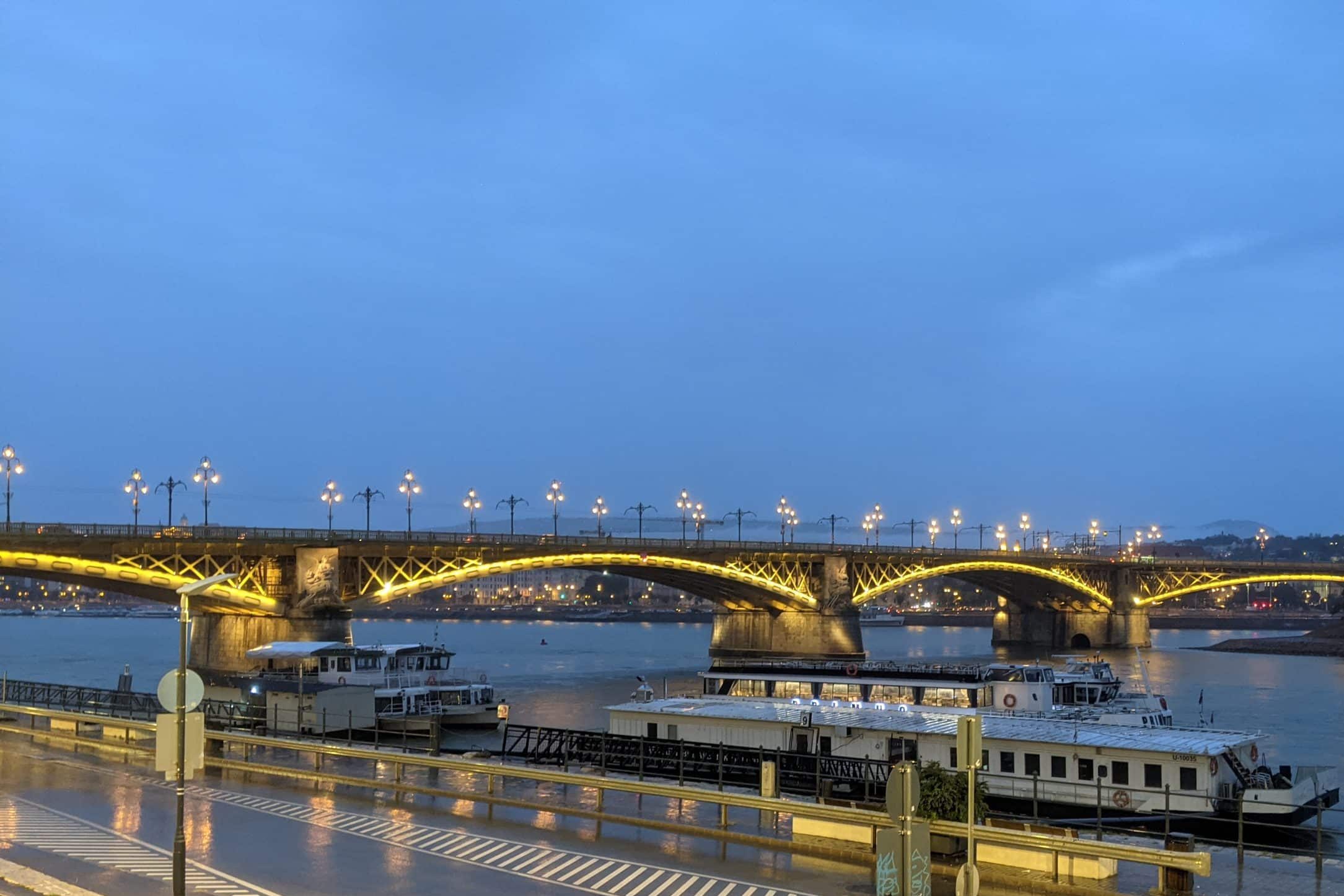
Most cruises run between one and two hours, and some include unlimited sparkling wine, dinner, or even live music. Consider taking a cruise on the eve of your departure from the city, as you’ll be left with lasting memories of a place that likely has won you over during your stay.
Conclusion
Budapest is a great European destination. With a rich history and a mix of old and new, there’s something special for everyone who visits.
Personally, I don’t always plan on returning to cities that I’ve already been to again and again. An exception to this is Budapest, which I find myself drawn back to year after year.
Next time you find yourself in Europe, be sure to add Budapest to your itinerary for a short or long visit. It’s a decision you most definitely won’t regret.






